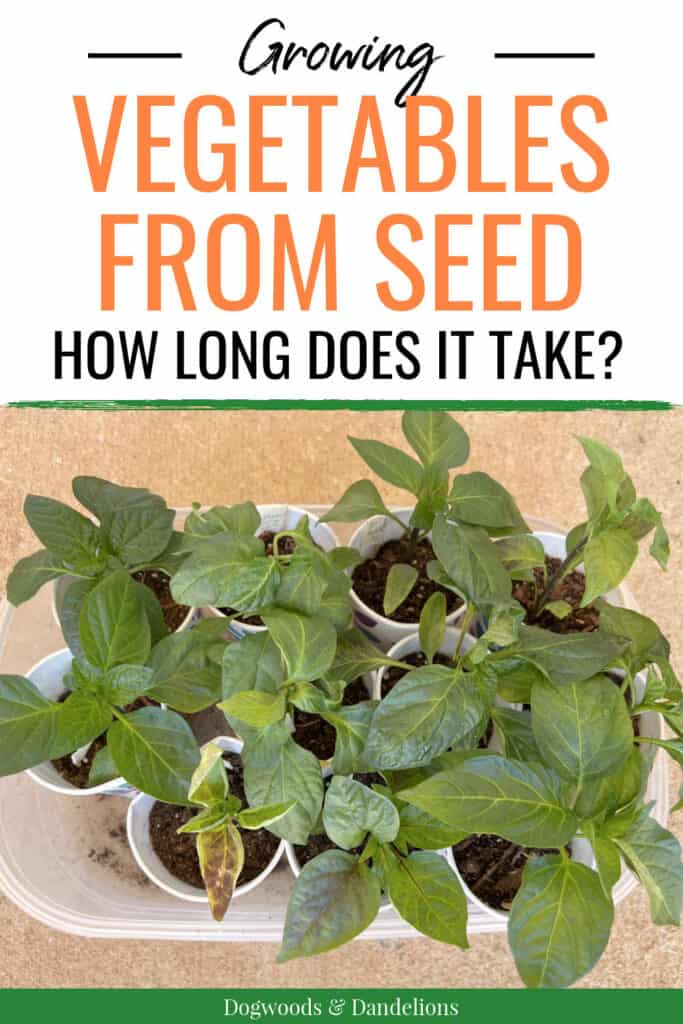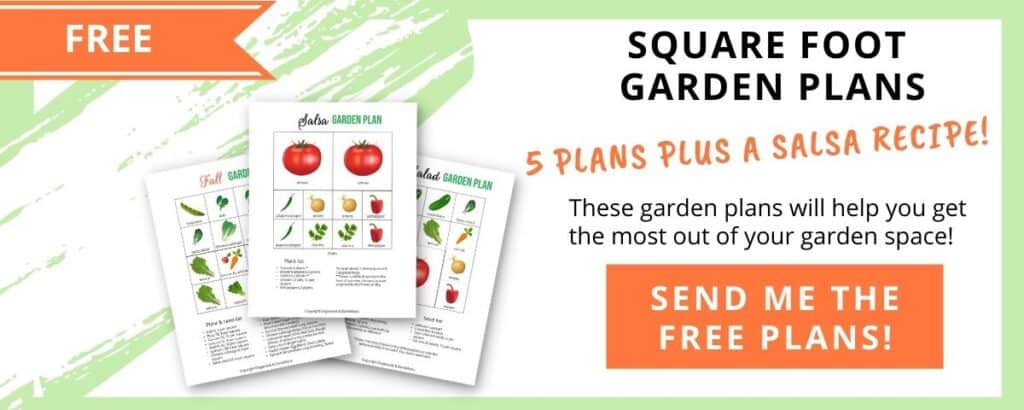How Long Does It Take to Grow Vegetables From Seed?
Inside: How long it takes to grow vegetables from seed will vary depending on the vegetables you are growing and even the different varieties of each vegetable.
One of the most frequent gardening questions I get is “How long does it take to grow vegetables from seed?” And my answer is always the same? It depends on what you are trying to grow.
Different vegetables take varying amounts of time to reach full maturity. And there are other factors that can determine the amount of time it takes for the first harvest.
Colder temperatures, lack of moist soil, and soil fertility can all affect how long it takes for vegetables to germinate.
And whether or not your garden is located in full sun or partial shade can also affect germination rates. (Longer germination rates mean it will take longer to get a harvest from the vegetable.)
There are a few vegetables that can be ready to harvest in less than 30 days like fast-growing radishes, while others can take over 120 days like slower-growing winter squash. And some vegetables like asparagus take over a year to harvest if you start them from seed.
How Do I Know How Long It Will Take For a Vegetable to Be Ready to Harvest?
Many seed catalogs and seed packets will tell you the number of days it will take that variety to be ready to harvest. But remember, this is just an average, based on ideal conditions. I’ve had plants mature faster and some mature slower depending on a variety of factors.
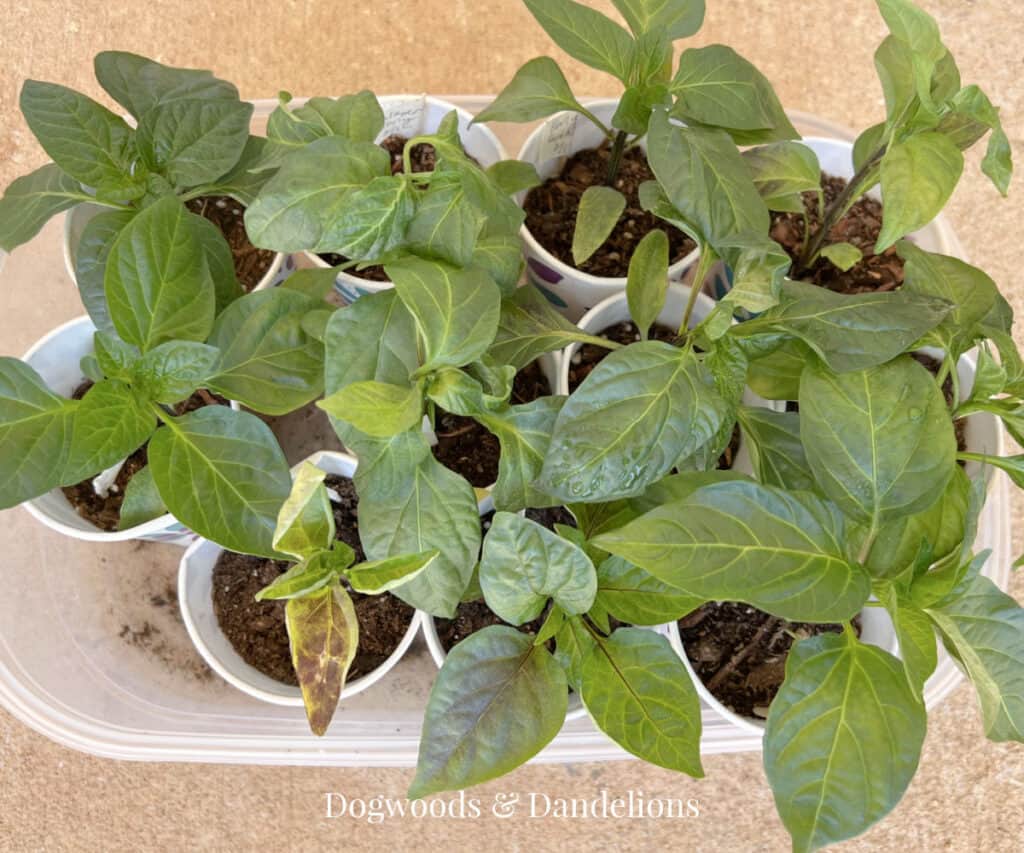
Affiliate Disclosure: Please note that some of the links in this article may be affiliate links and I may receive a small commission if you purchase something through a link. It will not change your cost. As an Amazon Associate, I earn from qualifying purchases. For more information, see my disclosures page.)
However, there are many factors that can influence how long it takes to grow vegetables from seed. Let’s explore them in detail.
If you are looking for a list that shows how long it takes a specific vegetable to grow from seed, you can find one at the bottom of the post.
Starting Vegetables from Seeds Indoors vs. Outside
Many vegetables will benefit from being started indoors under grow lights. When starting vegetable seeds indoors, you can ensure consistent temperatures and soil moisture. This allows you to give the vegetables a head start so can harvest some of your own food sooner.
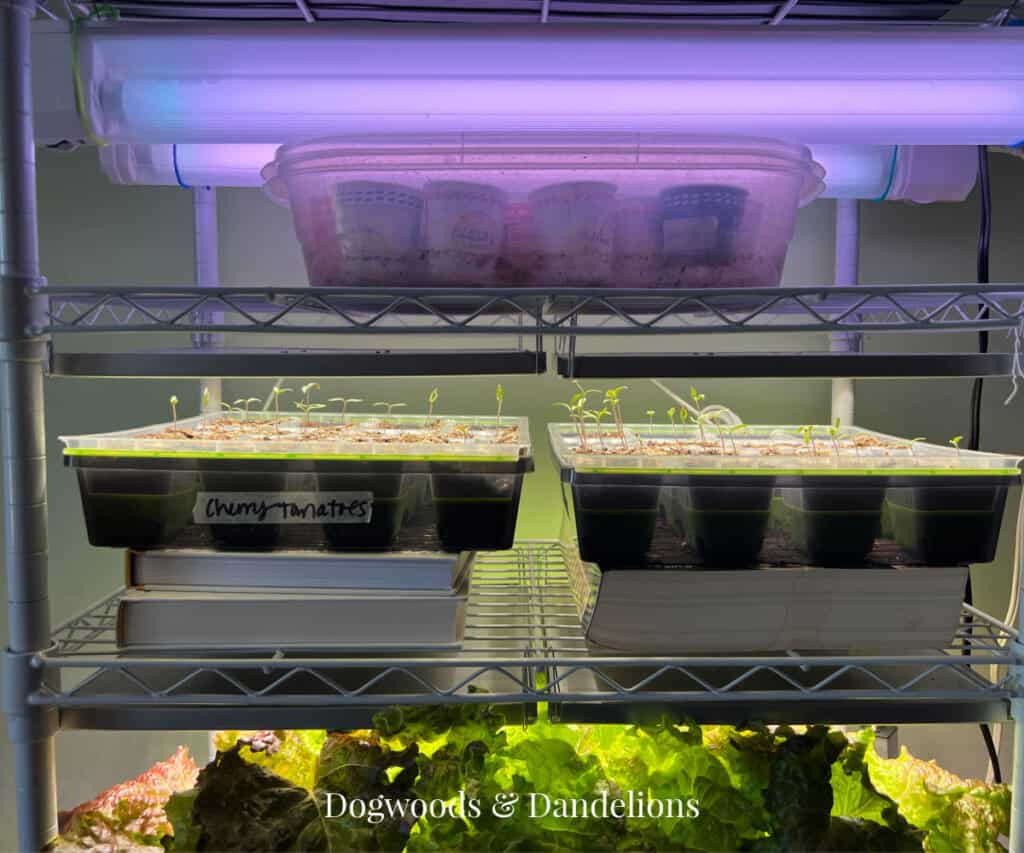
And adding a heat mat underneath your starts can speed seed germination for hard-to-start vegetables like peppers.
But other vegetables do better being started directly outdoors in the ground. Root crops such as beets, carrots, and radishes don’t transplant well so the best way to start them is to sow the seeds in the garden.
Other vegetables such as peas and green beans (both pole and bush beans) are also best sown in the ground as it would take a lot of time and space to start them indoors.
The Outdoor Temperature
The outside air temperatures also play a factor in how long it takes to grow vegetables from seed. Cool weather can cause seeds to take longer to sprout. If you have had a cool spring, it will take longer for the soil to warm up, even if the outside temperature is relatively warm.
Also, a sudden cold snap, even if it isn’t enough to destroy summer crops can stunt their growth.
But some cool season crops can also bolt (go to seed) if the weather turns off hot suddenly. Where I live (North Carolina) we have a hard time growing broccoli, cauliflower, and Brussels sprouts in the spring because we go from cool weather to hot weather in just a couple of weeks.
The Soil Temperature
Soil temperatures play a large role in determining how quickly seeds will sprout. Most seeds prefer moderate temperatures of 65 to 80 degrees to germinate.
If the soil temperature is too cold, seeds will lay dormant and not sprout and may even rot. If temperatures are too hot, they may not germinate at all.
Adequate Moisture
Having enough moisture will help seeds germinate more quickly. Seeds need water to help break down the seed coat.
However, too much water can cause the seeds to rot while waiting to sprout.
The Variety of the Vegetable
And even among the same vegetables, there can be a large difference in how long it takes to harvest a vegetable starting from seed.
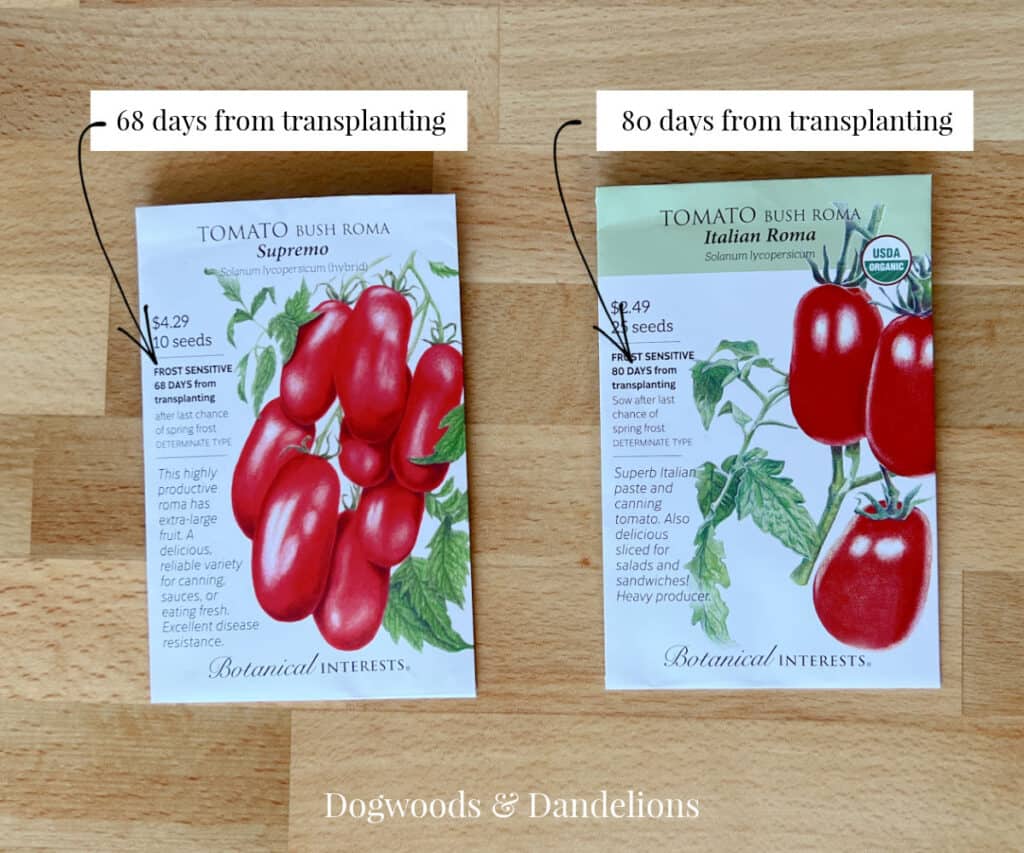
For instance, the ‘Eight Ball’ variety of zucchini can be harvested in 35 days but the ‘Bennings Green Tint’ variety takes 63 days. That’s a difference of 28 days!
Sow seeds of ‘Point One’ cabbage and start harvesting some in 48 days. However, if you plant the variety ‘Perfection Savoy’ you’ll be waiting 90 days until harvest.
Those home gardeners with a shorter growing season would do well to choose shorter maturing varieties of vegetables such as peppers, eggplant, and tomatoes that take longer to produce a harvest.
And tomato seeds are a bit different than other summer crops. The days to maturity on the package of seeds means the days from when you plant the tomato plants in the garden.
It does not take into account the time it takes to start them from seed indoors. (I have never understood why tomatoes are labeled differently.) So don’t expect full size ripe tomatoes 68 days from the day you sow the seeds.
Old Seeds
Old seeds can often take a bit longer to sprout than new seeds and thus take longer to harvest fruit from the plant. While I do often use older seeds, I sow them more thickly.
I recommend new gardeners always use fresh seed for the first year or two as you’ll have a much higher germination rate. And if you want to save your extra seeds for optimal performance, this post explains how to store seeds.
My Squash Experiment
Several years ago, I did an experiment. I planted the same variety of squash seed indoors under my grow light and outside directly in the garden on the same day, a few days after my last frost.
Once the indoor seeds were well established I transplanted them to the garden near the squash already sown directly in the ground.
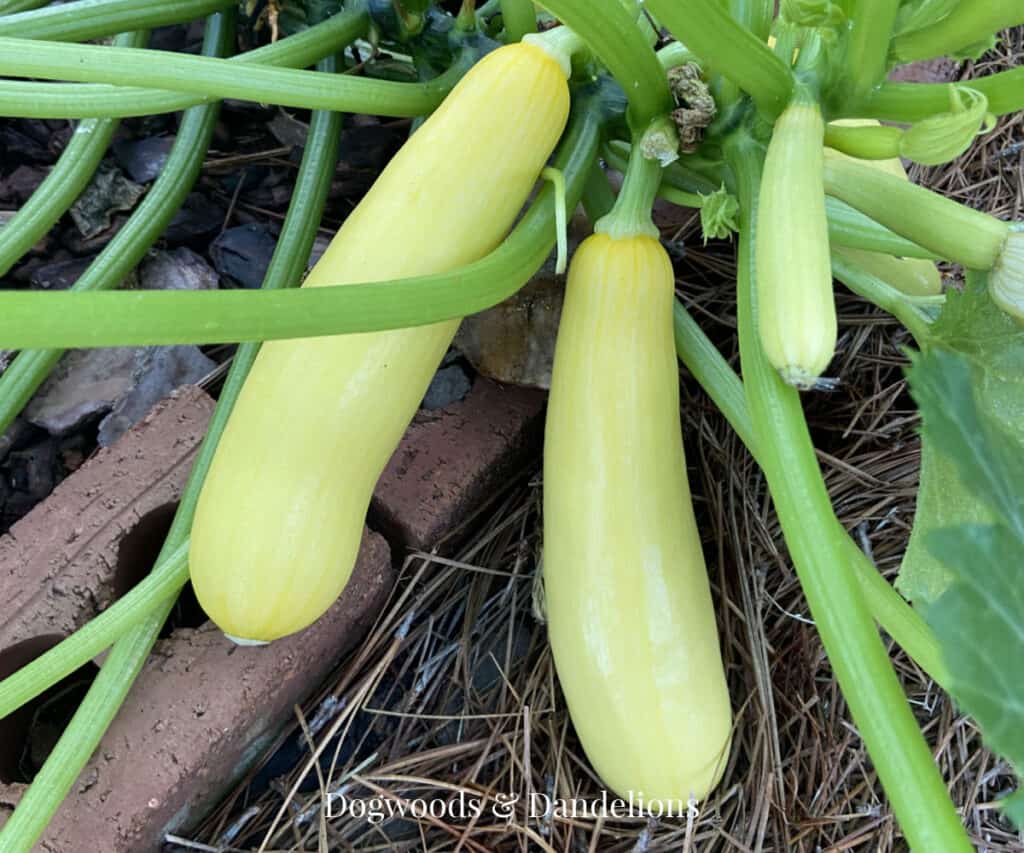
I only harvested squash 5 days earlier from the squash I started indoors than the one outdoors. Now obviously, this won’t work for all vegetables.
Some must be started indoors to allow enough time to germinate and mature to harvest (tomatoes, for instance) and others need to be started directly outdoors because they don’t transplant well (carrots).
How to Grow Vegetables From Seed Indoors
I’m going to give you a quick overview of how to start seeds indoors. For a more detailed tutorial, check out my post on How to Start Vegetables From Seed.
First, choose a seed starting container like seed trays or Jiffy pellets. If using trays fill the individual cells with seed-starting mix or a good quality potting soil. Don’t use garden soil or you are likely to have problems with fungal diseases.
Note how soon to start the seeds, for instance, many are started in early spring, 4 to 6 weeks before your last frost, but some need to be started 8-10 weeks before frost, especially if you have a short growing season.
And if you are growing a fall garden, your fall vegetables need to be started in late summer, well before fall actually begins. Waiting until early fall to start cooler weather crops is a mistake many new vegetable gardeners make.
Seed companies usually tell you this information in their catalogs and you can often find it located on the back of the seed packet.
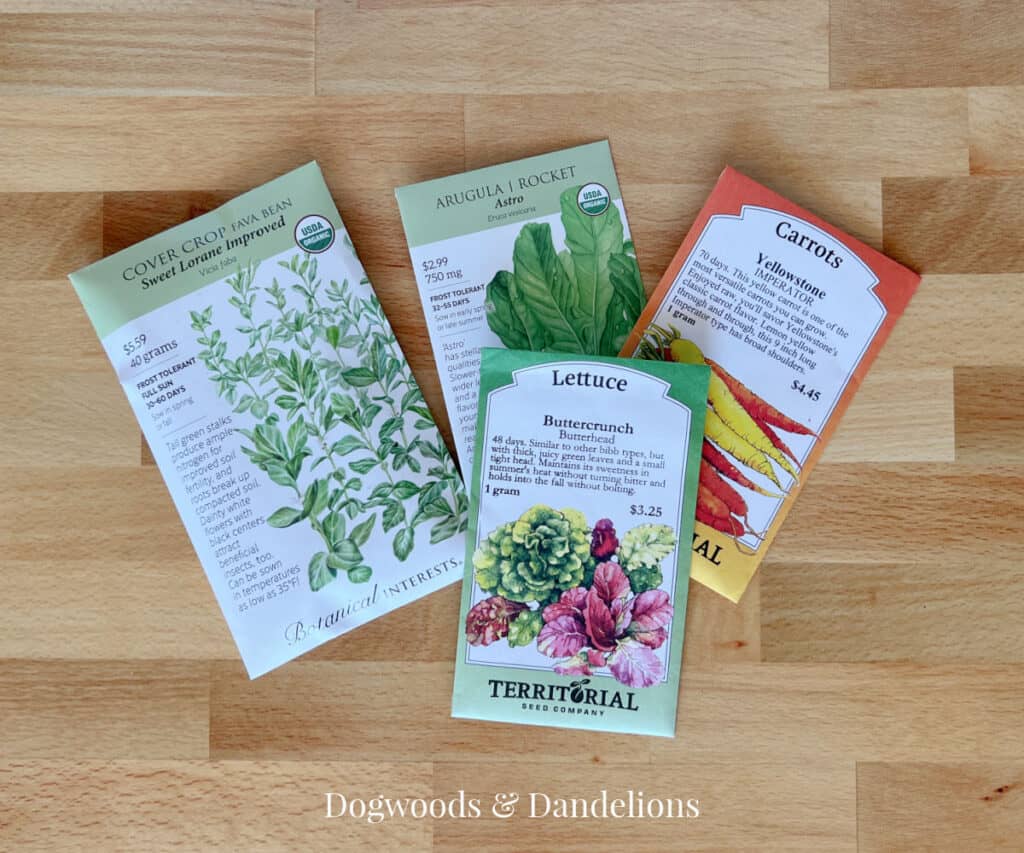
You don’t want to start the seeds too soon or they will grow too large before planting them outside but you do want to start them soon enough that they will have plenty of time to produce their fruit before frost.
You can find your first and last frost dates here.
Plant the seed to the depth recommended on the seed packet. I usually plant two seeds per cell to ensure germination.
Place the containers in a warm place under grow lights for best results though fluorescent lights will do in a pinch. The room temperature should remain consistent throughout the day. (In other words, don’t start seeds in a cold garage or attic with fluctuating temperatures.)
In a couple of days to a week or so (depending on the vegetable) you should see the seeds starting to sprout. Once the seeds start to germinate, keep the light source no higher than 2 inches above the seedlings. Not providing enough light is a common mistake beginning gardeners make.
Provide a consistent amount of water but don’t drown the plants.
If the plants grow too large, common among vegetables that need to be started 4 or weeks before your last frost, you may need to pot them up into larger containers.
If you planted summer vegetables, start hardening them off two weeks before your last frost date. Plant them in the garden in loose soil full of rich organic matter after all danger of frost has passed.
How to Grow Vegetables From Seed Outdoors
The process of growing vegetable seeds outdoors is pretty similar to starting seeds inside. However, you plant directly in the soil after all danger of frost has passed for summer vegetables.
Not sure which vegetables are cool-season crops (spring and fall) and warm-season crops (summer)? This blog post explains the difference.
Plant seeds at the depth stated on the seed packet. Water well. Keep an eye on the soil moisture and water just when the soil begins to dry out. If it gets too dry the seeds may sprout and then die from lack of water.
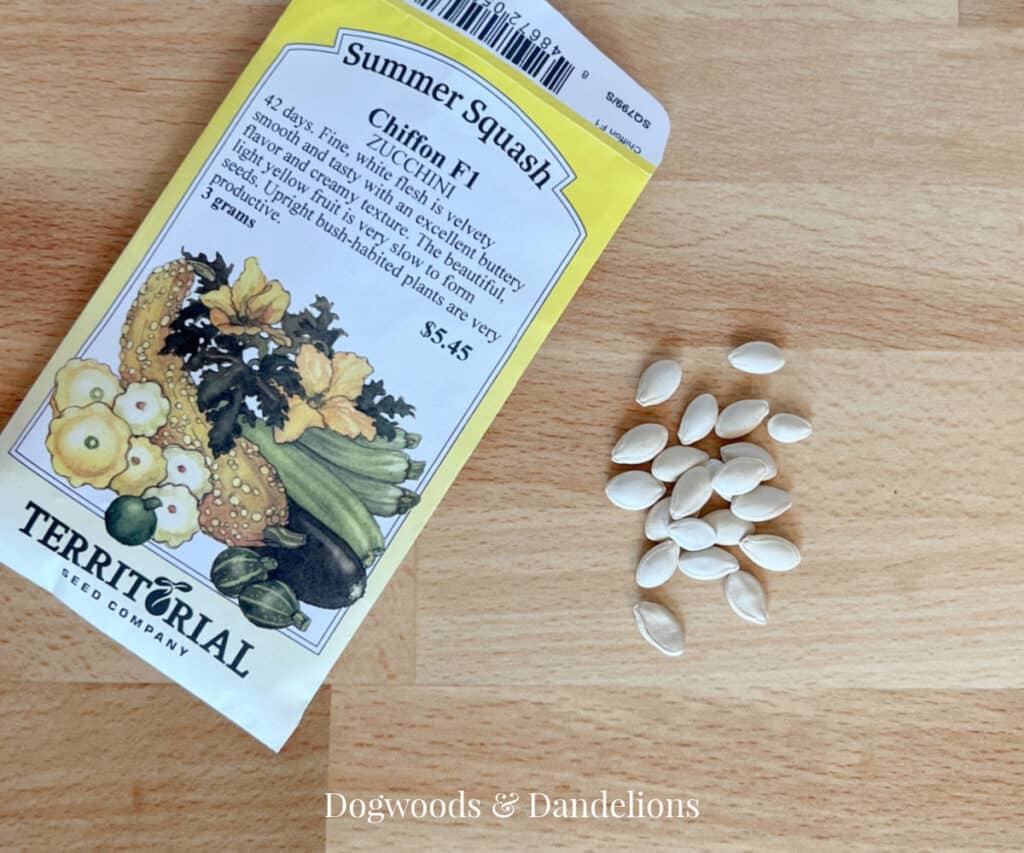
Small seeds are usually best started indoors but large seeds are easily planted directly in the ground. The exception to this is root vegetables. They are generally sown directly in the garden as most don’t transplant well.
How Long Does It Take to Grow Vegetables From Seed?
You’ll notice that there can be a wide range of how long it takes to grow vegetables from seed.
For those that live in cooler climates with a shorter growing season, it is a good idea to choose shorter maturing varieties and start seeds indoors or purchase transplants for vegetables that take longer to reach the harvest stage.
Those living in warmer climates can choose longer maturing varieties of summer vegetables but may have better success choosing shorter maturing cool weather crops for spring and fall.
- beans – green bush: 50 – 65 days
- beans – green pole: 55 – 80 days
- beets: 45 – 65 days
- bok choy: 40 – 60 days
- broccoli: 56 – 100 days
- Brussels sprouts: 100 – 200 days
- cabbage: 45 – 80 days
- cantaloupe: 65 – 80 days
- cauliflower: 50 – 90 days
- carrots: 55 – 90 days
- celery: 80 – 110 days
- corn: 68 – 120 days
- cucumbers: 45 – 75 days
- eggplant: 45 – 75 days
- kale: 45 – 60 days
- lettuce: 35 – 75 days
- mustard greens: 30 – 50 days
- okra: 30 – 80 days
- onions: 50 days for scallions to 125 days for bulbing
- peas: 57 – 70 days
- peppers: 55 – 100 days
- pumpkins: 95 – 110 days
- potatoes: 70 – 135 days
- radishes: 25 – 50 days
- spinach: 25 – 51 days
- summer squash & zucchini: 38 – 70 days
- sweet potatoes: 80 – 120 days
- Swiss chard: 23 – 60 days
- tomatoes: 55 – 90 days
- turnips: 45 – 65 days
- watermelon: 70 – 100 days
- winter squash: 75 – 115 days
Remember, there are many factors that play a role in how long it takes vegetables to grow from seed. When starting your own garden, there are a few important things to remember…choose some of your favorite vegetables to eat, start small, and enjoy the process of growing your own vegetables.
Vegetable gardening is a great way to get some exercise and enjoy nature. With a little bit of hard work, you can grow many different things. But it is not an exact science and there are so many variables that come into play when determining how long it takes to grow vegetables from seed.
Related Posts
- The Easiest Vegetables for Beginners to Grow – If this is your first year or two growing a garden, you’ll find much more success if you stick to easy vegetables.
- Best Vegetables for an Edible Landscape – Want to grow vegetables but don’t have much space? Grow vegetables among your existing landscape plantings.
- Fast-Growing Vegetables – These vegetables will be ready to eat and harvest in just a few weeks.
